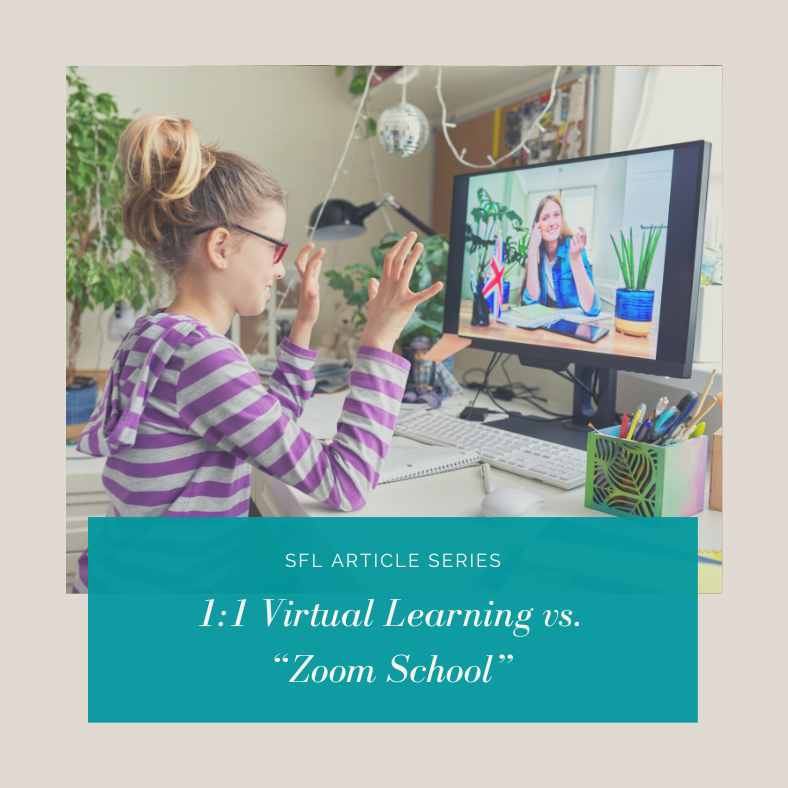No products in the cart.

Written by Stephanie Broytman, M.A.
Anyone who experienced the early days of school shutdowns in 2020 and 2021 can tell you that online schooling left much to be desired. Teachers were suddenly asked to do a completely different job using tools they likely never encountered before. It was a confusing time for everyone, and children endured frustration and isolation throughout the pandemic. Many parents may believe that virtual schooling will never work for their child after experiencing “Zoom school”. However, not all virtual learning experiences are created equal.
While it may never be practical to instruct and monitor a class of 25 children in tiny boxes on a screen, many skilled and experienced educators have found success in creating engaging and meaningful virtual learning experiences for children in small group and individual sessions. Engaging children through virtual learning can be challenging, but several strategies can be used to make the experience more effective and enjoyable for children. Here are some pros and cons of virtual learning, as well as some tips for learning in a virtual setting and how it differs from “zoom school.”
Pros of Virtual Learning
Flexibility: Virtual learning can be done from anywhere, which can be a significant advantage for busy families or those who live far from specialized instructors. Many children feel more comfortable and secure in their own space.
Personalized Learning: Virtual learning can be tailored to individual needs and learning styles, which can be helpful for children who struggle in traditional classroom settings.
Safety: Virtual learning can be a safe option in situations where in-person instruction is not possible (i.e., during a quarantine).
Cons of Virtual Learning
Screen Time: Virtual learning does involve screen time, which is not ideal for all families.
Technical Difficulties: Technical difficulties can be frustrating, and families must secure working equipment and adequate internet access.
Limited Social Interaction: Too much virtual learning can be isolating for children who thrive on social interaction.
How can a Teacher Engage Children through Virtual Learning?
There are many ways in which educators may use technology to engage students through virtual learning. Interactive learning tools like educational games, videos, and simulations can help engage children and make the learning experience more enjoyable. Incorporating multi-sensory learning into virtual lessons can help children better retain information. For example, using visual aids, music, or movement can help children learn and remember more effectively. Music, visuals, and sound effects can also help create a more engaging and immersive learning experience. Incorporating movement into virtual lessons can also help children stay focused and engaged.
How is virtual learning different from “Zoom School”?
“Zoom school” typically refers to classes that are conducted through an online platform, with a full class of students in tiny boxes while an instructor presents. It can be challenging for the teacher to determine if the students are paying attention (or even present at their computer) since children can manipulate their cameras and microphones. While virtual learning can involve Zoom or other video conferencing tools, it is most effective with one teacher and one student, where the participants can see each other in full screen and share their work through the camera or by screen-sharing. While virtual learning may not be for all students, many students can thrive if paired up with an experienced and creative educator with a strong background in evidence-based teaching practices!
Contact us to schedule an initial consult.
Additional Resources:






